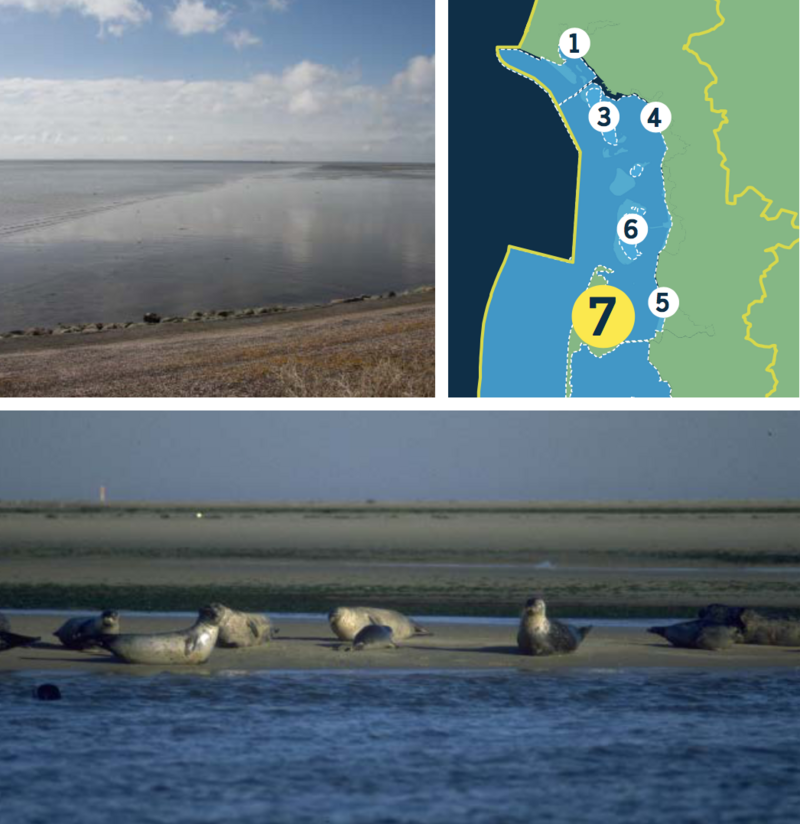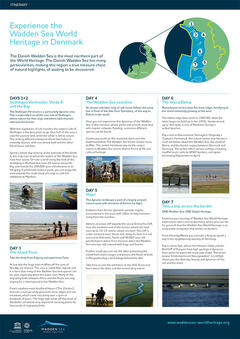The Danish Wadden Sea is the northernmost part of the Wadden Sea World Heritage. The Danish Wadden Sea has many particularities, making this region a true treasure chest of natural highlights, all waiting to be discovered.
Day
1+2
Skallingen Peninsula, Varde Å and Ho Bugt
The Skallingen Peninsula is a particularly dynamic area. This is especially true of the east side of Skallingen, where nature has free reign and where tidal channels cut across the terrain.
With the vegetation of salt marshes the eastern side of Skallingen is the best place to go. One half of the area is used for cattle grazing, while the other is left to nature. The striking difference between those two halves is instantly obvious, with one almost bare and the other full of fauna and flora.
Spend a whole day relaxing at the valley of the Varde Å, the only river to which the water of the Wadden Sea has free access. Or take a stroll along the foot of the Gulebjerg in Marbæk that rises 20 metres above Ho Bugt and reveals the 100,000-year old elevation in its full glory. A prominent lookout point, from which you can enjoy the view towards the small island of Langli or visit the exhibition at Myrthuegård.
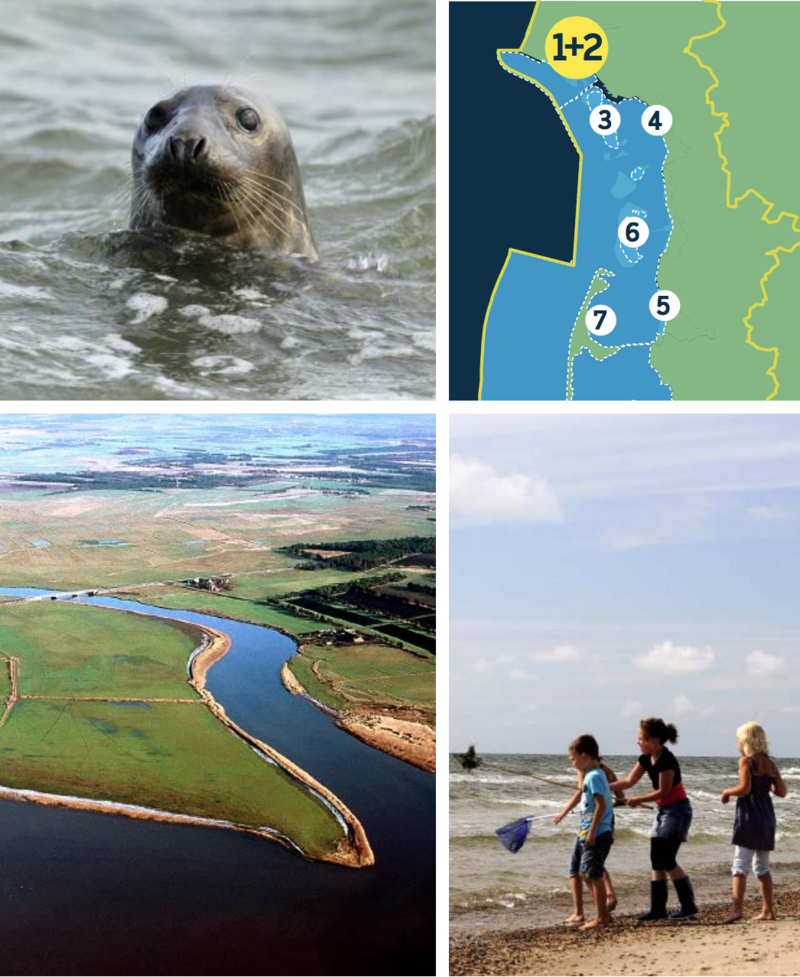
Day
3
The Island Fanø
Take the ferry from Esbjerg and experience Fanø.
At low tide the large tidal mudflats off the port of Nordby are drained. This area is called Næs Søjord, and it is here that numerous Wadden Sea bird species can be seen, especially when the water rises.
Fanø's southernmost headland Hønen features a narrow sandy peninsula, dune ridges and salt meadows, which came into being over a span of hundreds of years. The large high sands off the coast of Sønderho constitute very important roosting places for thousands of migratory birds.
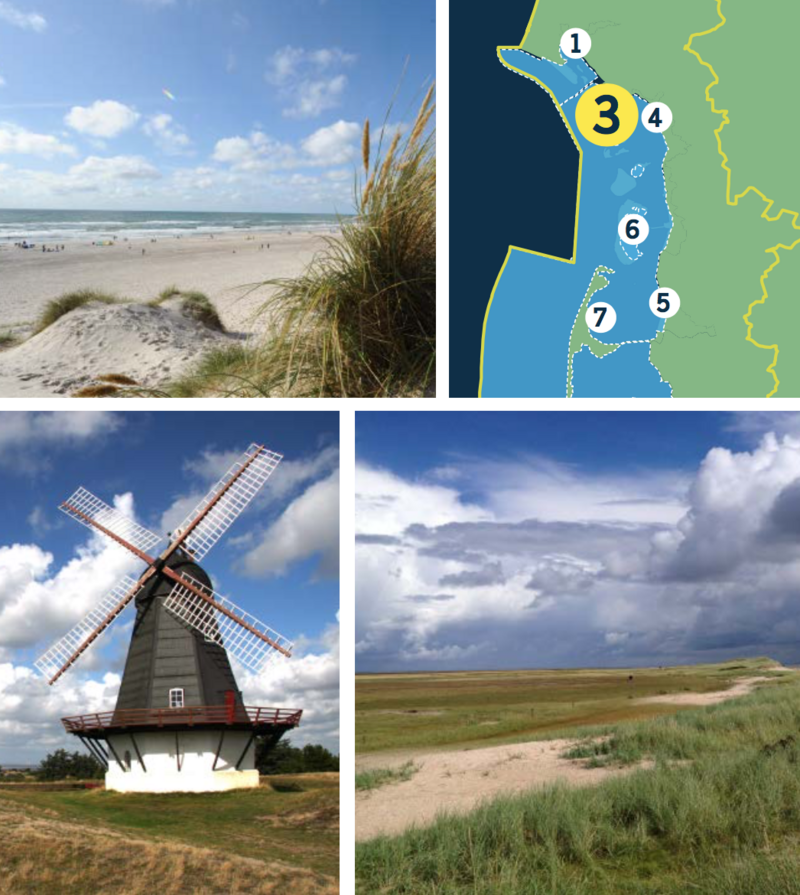
Day
4
The Wadden Sea coastline
An almost unbroken strip of salt marsh follows the coast line in front of the dike from Tjæreborg all the way to Ballum in the south.
Here you can experience the dynamics of the Wadden Sea. In the marshes, where plants and animals must deal with regular saltwater flooding, numerous different species can be found.
Continuing south on the mainland, don’t miss the Vadehavscentret, the Wadden Sea Visitor Center close to Ribe. This center introduces you to the unique nature of the Wadden Sea and its diverse forms of life and cultural heritage.
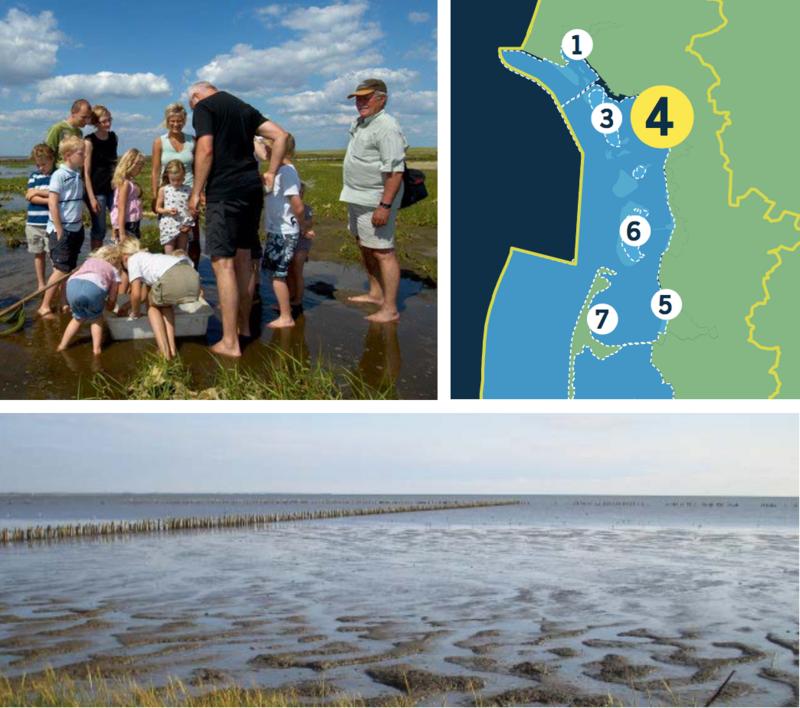
Day
5
Højer
This dynamic landscape is part of a largely unspoilt natural coast with moraines of former Ice Ages.
Evidence from former glaciation periods may be encountered in this area, with 18 km of hilly moraines rising from the marshes.
Admire an active cliff towards the sea at Emmerlev Klev, near the southern end of the area, where the land rises up to 10-15 metres above sea level. This cliff is under constant attack by waves and along its foot it is not unusual to find rocks, fossils and 90,000-year old petrified plant debris from the time when the Wadden Sea area was still covered with bogs and forests.
Further south you can see the dikes protecting the inland from storm surges and witness the flocks of birds in Margrethe Kog, a bird refuge behind the dike.
Take time to visit the exhibition at the Vidåslusen and learn about the dikes and its outstanding nature.
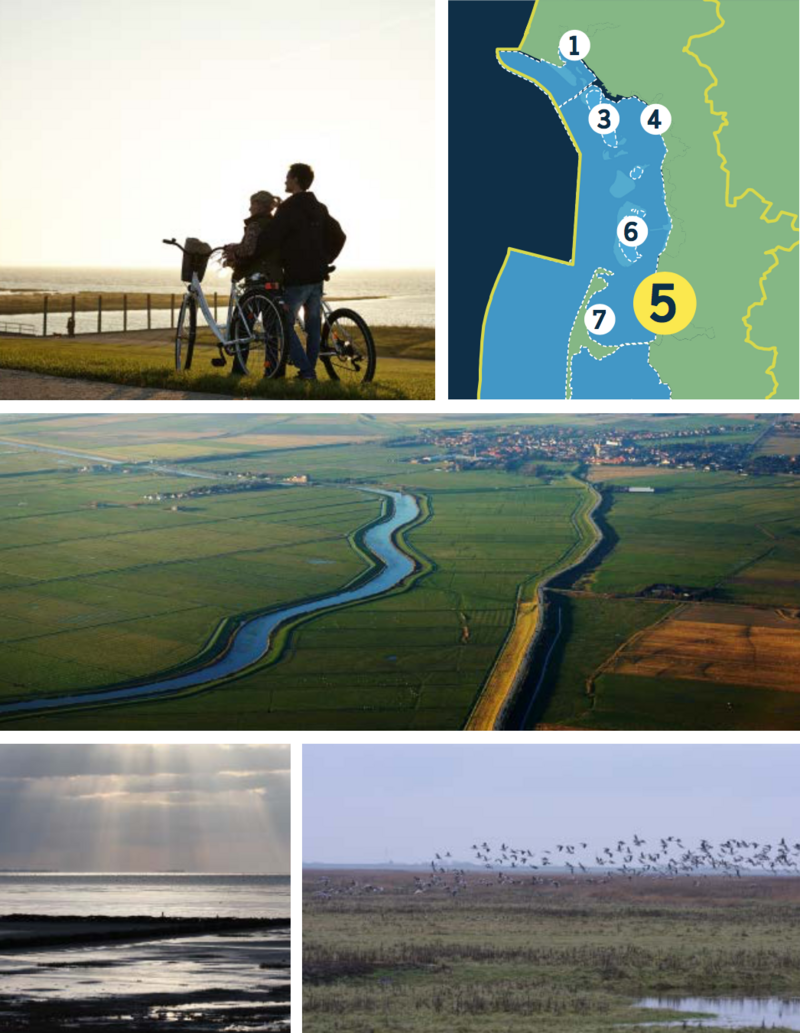
Day
6
The Island Rømø
Rømø boasts no less than five dune ridges, testifying to the island’s constant westward expansion.
The oldest ridge dates back to 1000 AD, while the latest began to build up in the 1970s. Sønderstrand, up to 3 km wide, is one of Northern Europe's widest beaches.
Pay a visit to Naturcenter Tønnisgård. Originally a ‘Captain's Farmstead’, this nature center now houses a small exhibition about the Wadden Sea, the island of Rømø, and the border region between Denmark and Germany. The center offers various outings, including mudflat tours, visits to World War II bunkers, and oyster harvesting (September to April).
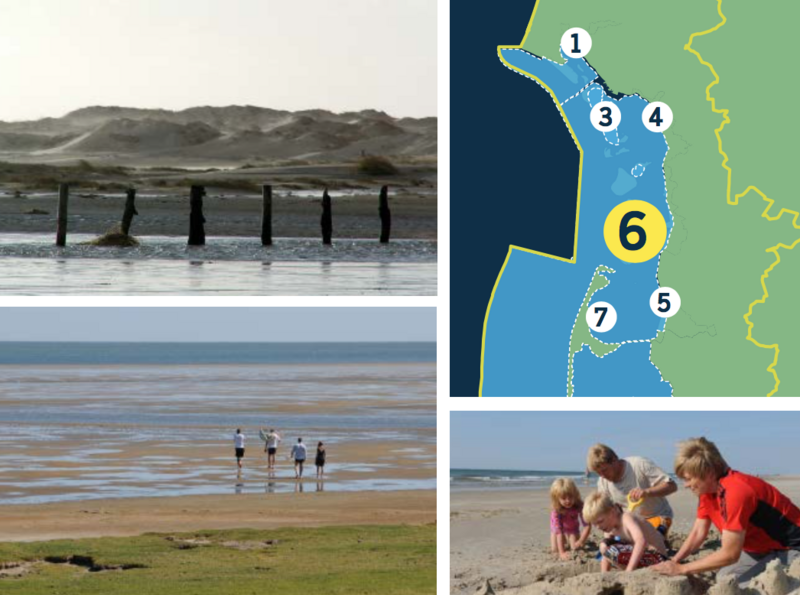
Day
7
Take a trip across the border
ONE Wadden Sea, ONE Global Heritage.
Continue your journey of Wadden Sea World Heritage experiences with a visit to Germany, where you can see for yourself that the Wadden Sea World Heritage is a continuous ecosystem that knows no borders.
From Havneby/Rømø you can take a ferry to spend a day in neighbouring Germany.
Pay a visit to Sylt, where the Hörnum Odde and the Red Cliff of Kampen have high geological dynamics and from which to watch the coast take shape. The visitor center ‘Erlebniszentrum Naturgewalten’ in List/Sylt shows you the diversity, beauty and dynamics of the sea and the coast.
